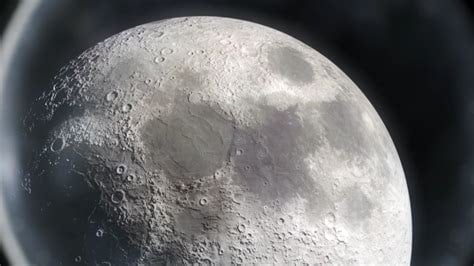
A rocket on course to crash into the moon is a China rocket not a SpaceX rocket as first reported.
Experts who first identified the rocket heading on a crash course for the moon realized that they misidentified the piece of space trash.
Astronomy experts say they originally misread the secrets of the night sky last month: it turns out that a rocket expected to crash into the Moon in early March was built by China, not SpaceX.
A rocket will indeed strike the lunar surface on March 4, but contrary to what had been announced, it was built not by Elon Musk’s company, but by Beijing, experts now say.The rocket is now said to be 2014-065B, the booster for the Chang’e 5-T1, launched in 2014 as part of the Chinese space agency’s lunar exploration program.
The surprise announcement was made by astronomer Bill Gray, who first identified the future impact, and admitted his mistake last weekend.
“This (honest mistake) just emphasizes the problem with lack of proper tracking of these deep space objects,” tweeted astronomer Jonathan McDowell, who advocates for greater regulation of space waste.
“The object had about the brightness we would expect, and had showed up at the expected time and moving in a reasonable orbit,” he wrote in post.
So the rocket about to hit the Moon, it turns out, is not the one we thought it was. This (an honest mistake) just emphasizes the problem with lack of proper tracking of these deep space objects. https://t.co/JXKpUmEC2X
— Jonathan McDowell (@planet4589) February 13, 2022
SpaceEx announced last year that they plan to land humans on the moon in the near future.
Only 24 humans have been to the Moon, and no one has been back since 1972. Today, NASA announced they have selected Starship to land the first astronauts on the lunar surface since the Apollo program. We are humbled to help NASA usher in a new era of human space exploration.
Together, NASA and SpaceX have successfully executed similarly bold and innovative partnerships, including restoring America’s ability to launch astronauts to orbit and return them safely home. We will build upon our shared accomplishments, and leverage years of close technical collaboration to return to the Moon. In doing so, we will lay the groundwork for human exploration to Mars and beyond.
Sustaining a human presence on the Moon will require the safe and affordable transportation of crew and significant amounts of cargo. SpaceX’s Starship spacecraft and Super Heavy rocket represent an integrated and fully reusable launch, propellant delivery, rendezvous, and planetary lander system with robust capabilities and safety features uniquely designed to deliver these essential building blocks.
The post Rocket Expected to Hit the Moon First Attributed to SpaceEx Now Determined to be a China Rocket appeared first on The Gateway Pundit.
